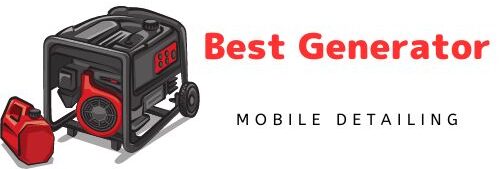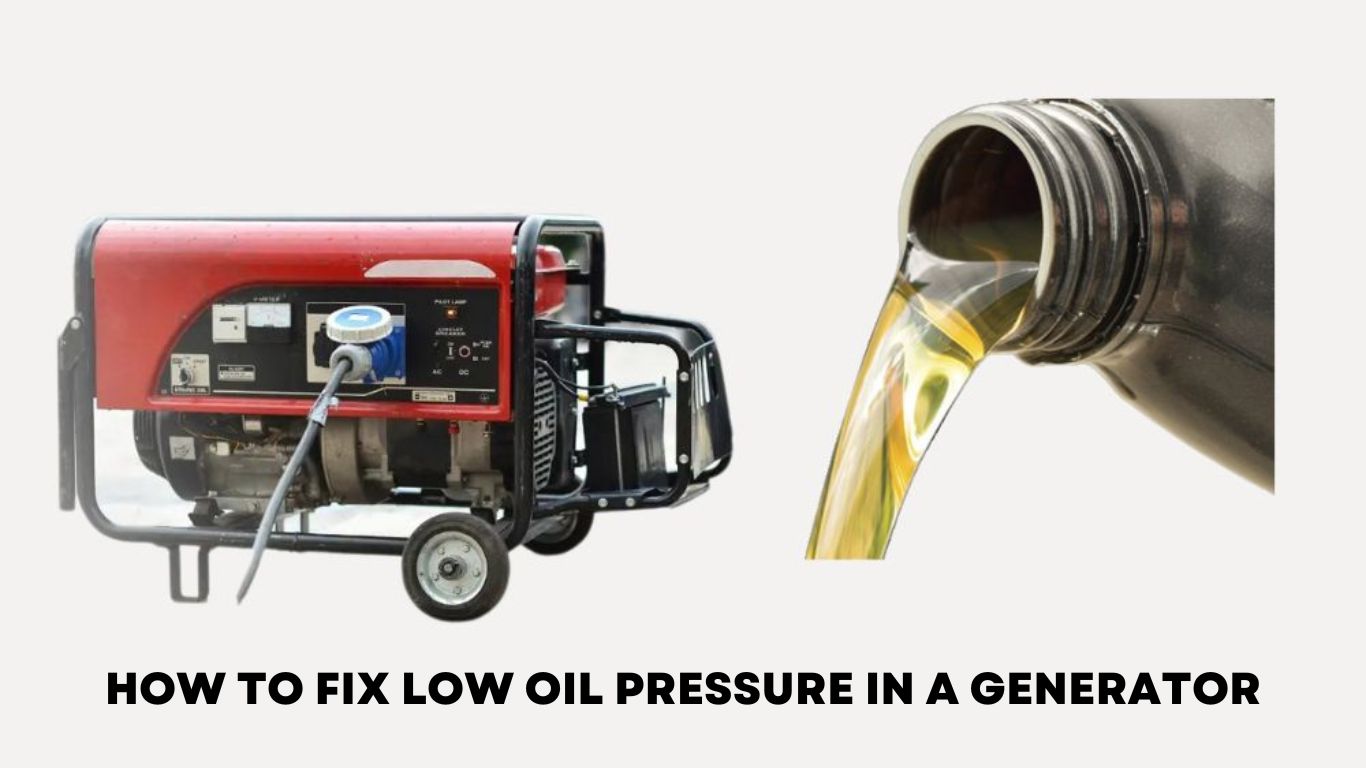Have you ever switched on your generator only to be greeted by a low oil pressure warning light? This situation can be frustrating, especially when you’re relying on that generator for mobile detailing or backup power. So, how to fix low oil pressure in a generator? I’ve seen this issue more times than I can count, and it often boils down to a few key factors that anyone can address.
An article from the Best Generator for Mobile Detailing will walk you through the steps to diagnose and fix this issue, saving you time, money, and a lot of frustration. Is it simply a case of low oil levels, or are you facing something more complex, like a clogged filter or a faulty pressure gauge? Let’s explore the possible causes and solutions.
Why is Oil Pressure Important in Your Generator?
When you’re out in the field, relying on your generator to keep your mobile detailing business running, the last thing you want is for low oil pressure to bring everything to a halt. Have you ever stopped to think about why oil pressure matters so much? Without the right pressure, your generator’s engine won’t get the lubrication it needs, and that can quickly lead to overheating friction and even catastrophic engine failure.
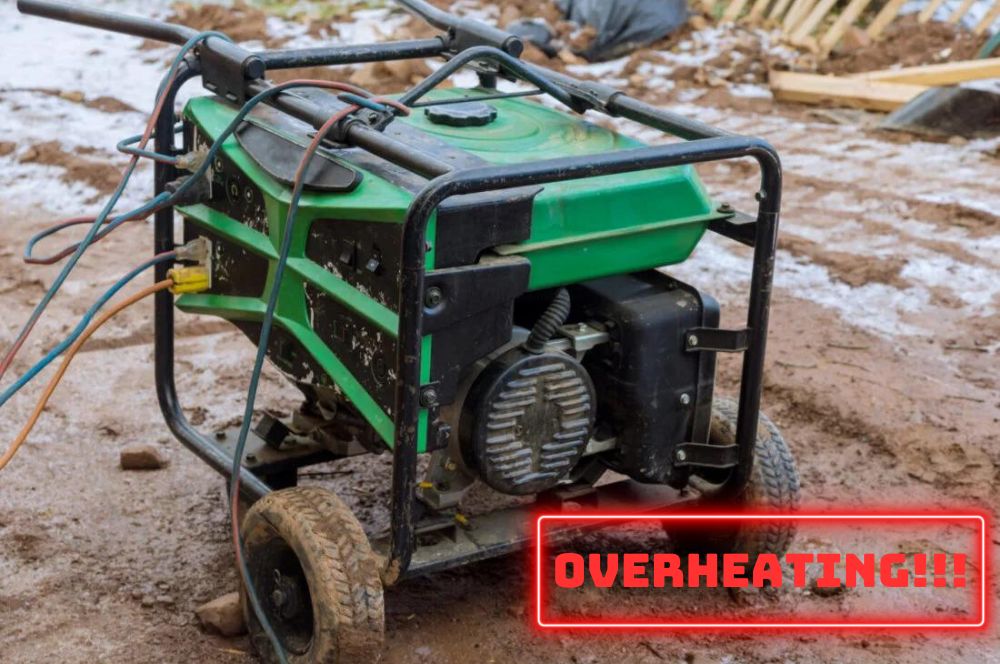
In my experience, oil pressure serves as the lifeblood of your generator. Every moving part inside the engine depends on that constant flow of oil to prevent metal-on-metal contact. Without it, wear and tear accelerate, leading to potential breakdowns when you least expect them. Imagine losing power during a big job—it’s not just inconvenient, it’s costly.
So, what happens when oil pressure drops? The temperature inside the engine rises rapidly, and before you know it, you’re looking at a bigger repair bill than anticipated. That’s why it’s crucial to monitor and maintain proper oil pressure, not just to keep your equipment running smoothly but to extend its lifespan. Let’s dive deeper into how to fix this issue before it gets out of hand.
What Causes Low Oil Pressure in a Generator? Common Issues and Diagnosis
Now, let’s tackle the question at the heart of your search: What causes low oil pressure, and how do you diagnose it? From my experience, this issue can arise from several factors—some simple, others more complex. But don’t worry, I’ll break it down step by step.
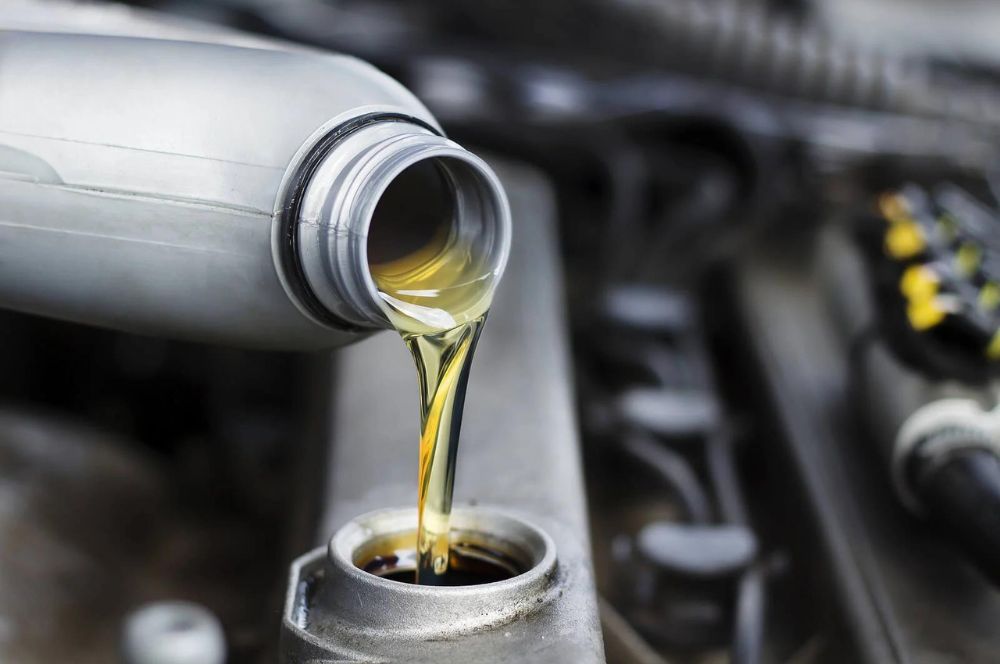
Inadequate Oil Levels
One of the most straightforward causes of low oil pressure is inadequate oil levels. It sounds obvious, but it’s an easy mistake to make, especially if you’re in a rush. Always start by checking the oil dipstick. Is it below the recommended level? If so, top it up with the right type of oil for your generator. Too little oil means there’s not enough to circulate through the engine, leading to a drop in pressure. Think of it like trying to run a marathon on an empty stomach—you won’t get far.
Oil Viscosity
Have you ever used the wrong oil in your generator? The viscosity of the oil—how thick or thin it is—plays a big role in maintaining pressure. If the oil is too thick (high viscosity), it won’t flow properly, especially in cold weather. On the flip side, oil that’s too thin (low viscosity) won’t provide enough resistance, and pressure will drop. Always consult your generator’s manual for the recommended oil type based on the climate you’re working in.

Clogged Oil Filters
Just like clogged arteries restrict blood flow, a clogged oil filter restricts oil flow in your generator. Over time, debris and contaminants build up, making it harder for oil to pass through, which drops the pressure. Inspect your filter regularly, and if it’s dirty or clogged, replace it. It’s a small investment compared to the cost of a major repair.
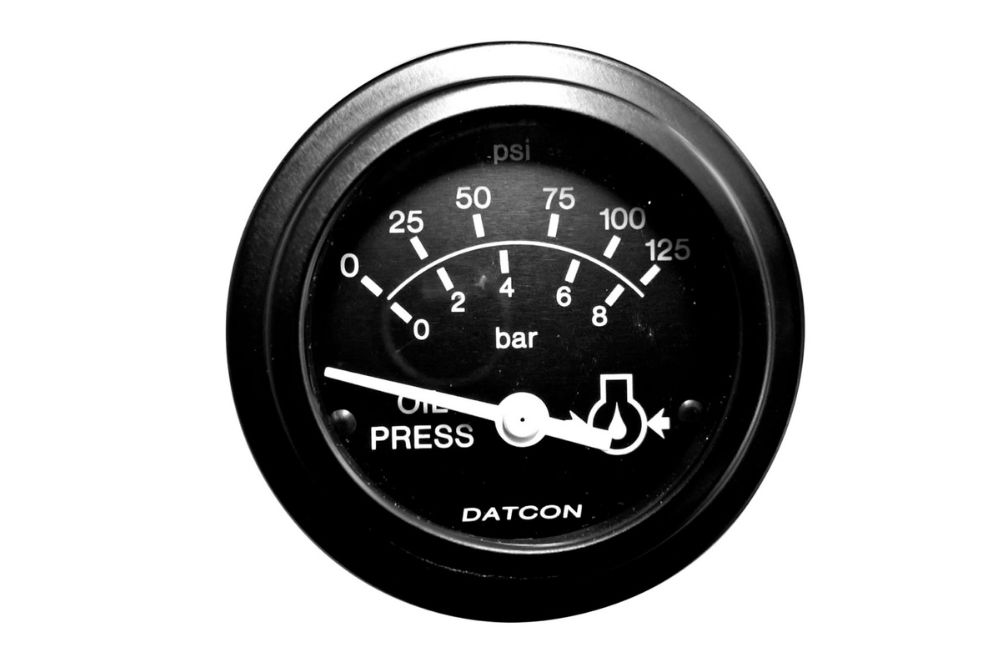
Faulty Oil Pressure Gauge
Finally, don’t overlook the possibility that the oil pressure gauge itself might be faulty. If you’ve checked everything else and the problem persists, the sensor that measures the oil pressure could be giving you a false reading. In this case, testing or replacing the gauge might be the fix you need.
Step-by-Step Guide: How to Fix Low Oil Pressure in a Generator
Here’s a step-by-step guide to get your generator back in action.
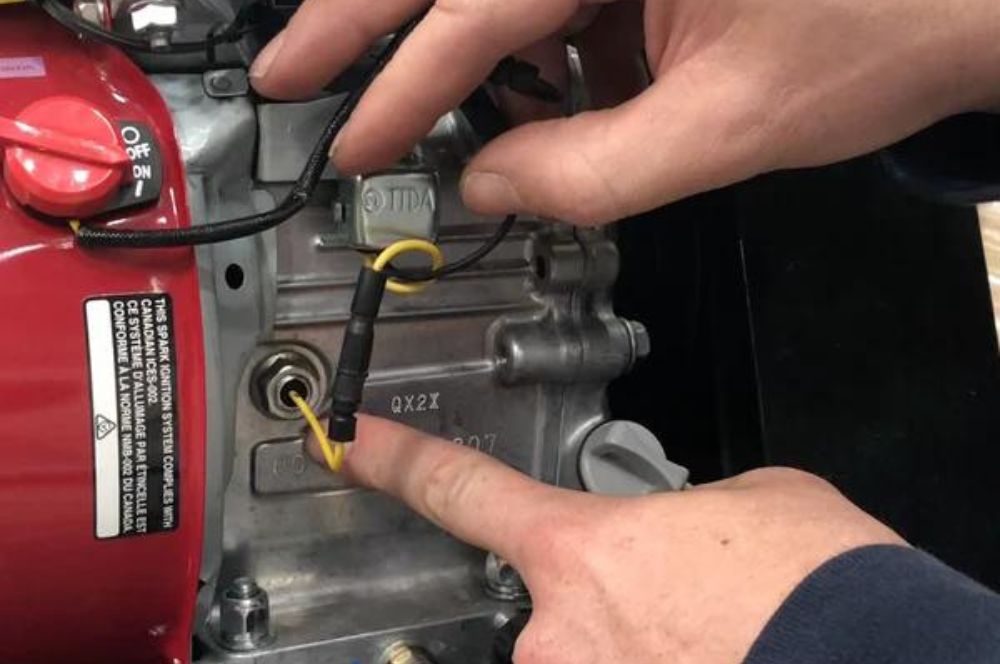
Step 1: Check Oil Levels and Top Up
The first and simplest fix is checking the oil levels. Use the dipstick to gauge whether the oil is below the recommended level. If it is, top it up with the appropriate oil for your generator model. Remember, different generators require different types of oil, and using the wrong one can lead to viscosity issues, which we’ll cover later. Always ensure the generator is on level ground for an accurate reading.
Step 2: Inspect and Replace Oil Filters
Clogged oil filters can severely restrict oil flow, causing the pressure to drop. I recommend visually inspecting the filter for any visible dirt or debris. If it’s clogged, replace it immediately. A new filter ensures smooth oil circulation, maintaining the correct pressure. Replacing the filter regularly, especially after heavy usage, can prevent this problem from recurring.
Step 3: Test and Replace Faulty Oil Pressure Gauges
Sometimes, the problem isn’t with the oil but with the gauge that measures the pressure. If you’ve checked the oil levels and the filter and everything seems fine, but the oil pressure warning persists, it’s time to test the gauge. A faulty sensor can provide inaccurate readings, leading you to believe there’s an issue when there isn’t. Replacing a faulty gauge is a quick fix that can save you a lot of troubleshooting.
Step 4: Address Mechanical Failures (Oil Pump, Valves, etc.)
If the previous steps don’t solve the problem, you might be dealing with mechanical failures like a faulty oil pump or pressure valve. These parts are crucial for maintaining oil circulation, and when they malfunction, the pressure drops. Advanced users can inspect these components, but if you’re unsure, I recommend contacting a certified technician to perform the necessary repairs. Mechanical failures are rare but can cause significant long-term damage if not addressed.
Common Symptoms of Low Oil Pressure in a Generator (and What They Mean)
How do you know when your generator is suffering from low oil pressure before it becomes a bigger problem? Recognizing the symptoms early can save you time, money, and frustration. So, what are the telltale signs?
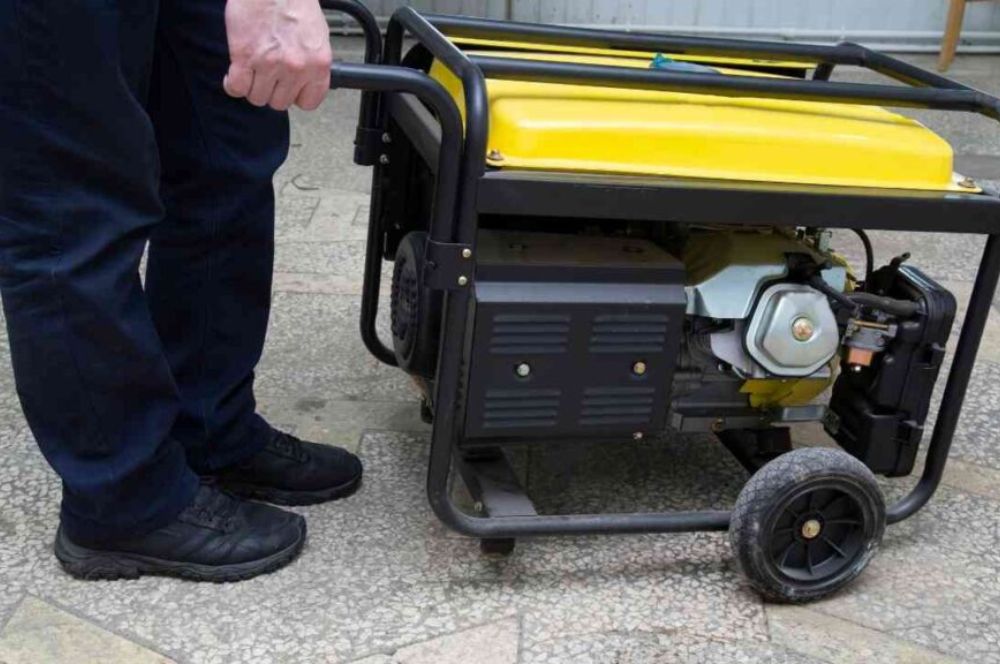
- One of the first things you’ll notice is the oil pressure warning light. If this light flickers on, don’t ignore it. It’s your generator’s way of signaling that something is wrong. Low oil pressure reduces the lubrication in the engine, increasing friction. If left unchecked, this can lead to catastrophic engine failure.
- Another symptom is unusual noises coming from the engine. Have you ever heard knocking or rattling sounds when the generator is running? This is often a result of insufficient oil pressure, causing metal parts to rub together. It’s a sure sign that the oil isn’t circulating as it should.
- Lastly, the generator may shut down unexpectedly. When the system detects critically low oil pressure, it automatically shuts off to prevent severe damage. If your generator turns off during operation, this could be the reason. By recognizing these symptoms, you can act swiftly and prevent costly repairs.
Preventative Measures: How to Avoid Low Oil Pressure in the Future
Now that you know how to fix low oil pressure in a generator, let’s talk about prevention. As someone who has worked with countless generators, I can tell you that the best way to avoid costly repairs is to stay ahead of the problem. Here’s how you can keep your generator running smoothly for years to come.
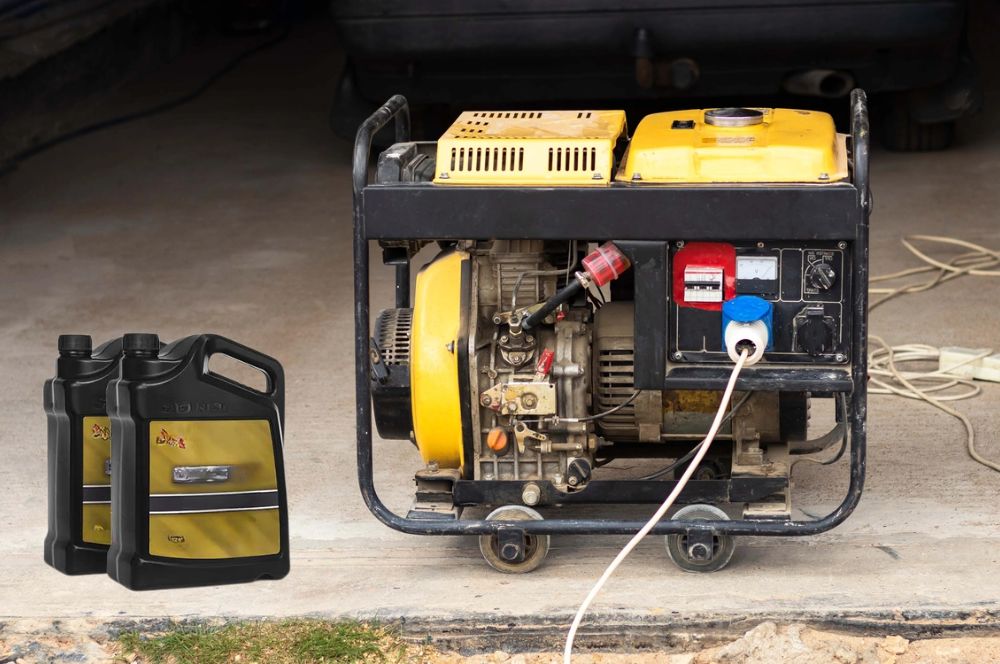
Regular Oil Changes
Think of oil as the lifeblood of your generator. Over time, it breaks down and loses its effectiveness. Performing regular oil changes ensures that the engine stays lubricated and operates efficiently. How often should you change the oil? It depends on how much you use the generator. If it’s in heavy use, you might need to change it every 50 to 100 hours of operation. Keep a log so you don’t miss an interval—it’s one of the simplest yet most effective ways to prevent low oil pressure.
Proper Storage
Improper storage can also lead to oil pressure issues. Have you ever stored your generator in an unheated garage or shed? Extreme temperatures can affect oil viscosity, making it either too thick or too thin. Make sure to store your generator in a controlled environment, especially during the off-season. If you have to store it in cold weather, use oil designed for lower temperatures to maintain proper pressure.
Inspecting for Leaks
Oil leaks are sneaky—they often go unnoticed until it’s too late. I recommend giving your generator a quick visual inspection each time you use it. Look for any signs of oil around the engine or on the ground underneath. If you spot a leak, address it immediately. A small leak can lead to significant pressure loss, and over time, this can cause major engine damage.
Final Thoughts: Keep Your Generator Running Smoothly
As the article from Best Generator for Mobile Detailing mentioned, low oil pressure in the generator is not an issue you can ignore. From my experience, it’s one of those problems that, if caught early, can be fixed with minimal effort. But if left unchecked, it can lead to costly repairs and extended downtime. So, what’s the best way forward?
Regular maintenance is the key. By staying proactive—changing the oil at the right intervals, inspecting for leaks, and checking the pressure gauge—you can prevent low oil pressure from becoming a recurring issue. It’s not just about fixing problems as they arise; it’s about extending the life of your equipment and keeping it running efficiently.
FAQ: Frequently Asked Questions About Low Oil Pressure in Generators
What happens if I ignore low oil pressure in my generator?
Ignoring low oil pressure can cause engine failure. Without proper lubrication, parts overheat and wear out, leading to costly repairs or even full engine replacement if not addressed quickly.
Can low oil pressure damage the generator permanently?
Yes, running a generator with low oil pressure for too long can cause permanent engine damage. Lack of lubrication leads to friction, which can warp or break internal parts. Fixing the issue quickly helps prevent lasting harm.
How often should I check my generator’s oil pressure?
Regular checks are crucial, especially with frequent generator use. Always check the oil level and pressure before each use, especially after periods of inactivity. Staying proactive helps prevent issues and keeps your generator running smoothly.
Should I call a technician if the problem persists?
If you’ve checked the oil, inspected filters, and tested the pressure gauge, but the issue remains, contact a technician. Mechanical problems like faulty oil pumps or valves need expert diagnosis and repair.
Marion Woods is an accomplished generator technology expert with over 15 years of experience, currently serving as the Chief Technology Officer at GenTech Power Solutions. She holds a Master’s degree from MIT and specializes in enhancing generator efficiency and integrating renewable energy sources. Marion is a respected author and speaker in the engineering community, dedicated to pioneering sustainable power solutions.
